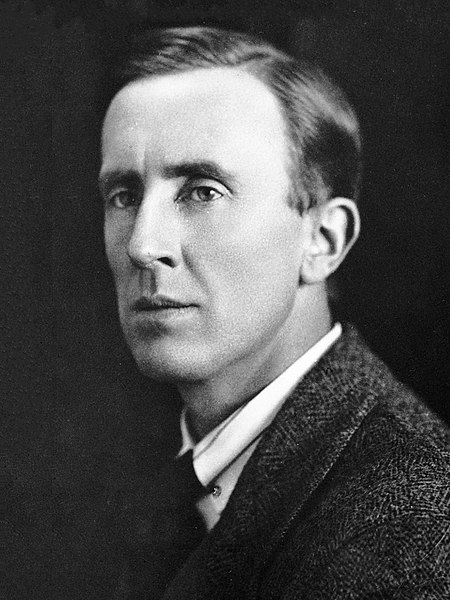
J.R.R. Tolkien
Tolkien Reading Day is on 25th of March each year, a day that has been organised by the Tolkien Society since 2003. The aim is to encourage fans to celebrate and promote the life and works of J.R.R. Tolkien by reading favourite passages. For avid The Lord of the Rings fans, the 25th of March is well known as the date of the downfall of the Lord of the Rings (Sauron) and the fall of Barad-dûr.
John Ronald Reuel Tolkien CBE FRSL, was a writer, scholar (professor) of the English Language, and a philologist, someone who studies the history of languages, especially by looking closely at literature. According to the Tolkien Society, the name “Tolkien” was believed by the family (including Tolkien himself) to be of German origin; Toll-kühn, meaning foolishly brave, or stupidly clever.
Early Years And Literary Debut
Born on January the 3rd, 1892, in Bloemfontein, South Africa, to English parents, he was four years old when his mother brought him and his younger brother, Hilary, back to England following the death of his father. He attended King Edward’s School in Birmingham in 1910 and 1911, and excelled in classical and modern languages.
In 1913, his first poem, ‘From the many-willow’d margin of the immemorial Thames’ was published in his school’s magazine. He was studying for a degree in English Literature at Oxford University, which he completed with first-class honours the year after the war broke out (1915). He wrote some other poems before he was called out to fight during World War I as second lieutenant in the Lancashire Fusiliers, and The Somme was his first experience of combat.
Following on from the war, he found a job helping to produce the Oxford English Dictionary (1919-1920). He was also professor at the Universities of Leeds (1920-1925) and Oxford (1925-1959) for almost forty years. He taught English Language and Literature, specialising in Old and Middle English. Tolkien is best known as the author of The Hobbit (1937) which he started writing in 1930 and its sequel The Lord of the Rings (1954-1955) which was written in stages between 1937 and 1949.
Influences On Tolkien
Tolkien’s fantasy books on Middle-earth, especially The Lord of the Rings and The Silmarillion, drew on a wide and eclectic array of influences including language, fairy tales, religion (he was a devout and life-long Roman Catholic), Christianity, Norse and Celtic mythology, archaeology, ancient and modern literature, and personal experience of his military service.
Tolkien was also an accomplished amateur artist who enjoyed painting for pleasure. He was good at landscapes and illustrated many scenes from The Silmarillion, The Hobbit and The Lord of the Rings. Tolkien had an amazing array of skills and was a truly multi-talented and inspirational writer and scholar. He had a unique approach to literature, a wonderful blend of creativity; a brilliant imagination, a passion for English Language, powerful artistic and illustrative skills, and the ability to incorporate his own personal experiences into his work.